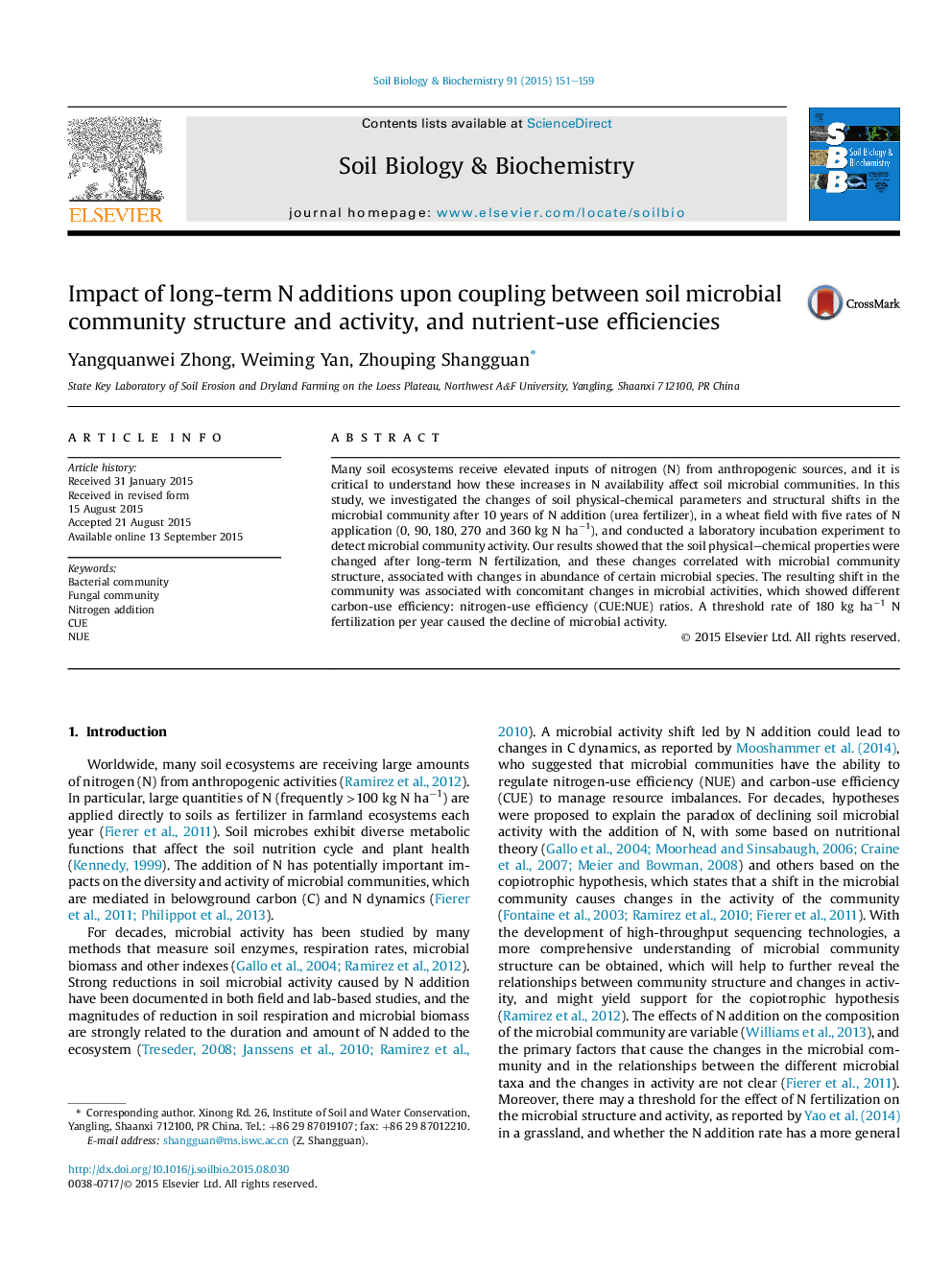| Article ID | Journal | Published Year | Pages | File Type |
|---|---|---|---|---|
| 8363793 | Soil Biology and Biochemistry | 2015 | 9 Pages |
Abstract
Many soil ecosystems receive elevated inputs of nitrogen (N) from anthropogenic sources, and it is critical to understand how these increases in N availability affect soil microbial communities. In this study, we investigated the changes of soil physical-chemical parameters and structural shifts in the microbial community after 10 years of N addition (urea fertilizer), in a wheat field with five rates of N application (0, 90, 180, 270 and 360 kg N haâ1), and conducted a laboratory incubation experiment to detect microbial community activity. Our results showed that the soil physical-chemical properties were changed after long-term N fertilization, and these changes correlated with microbial community structure, associated with changes in abundance of certain microbial species. The resulting shift in the community was associated with concomitant changes in microbial activities, which showed different carbon-use efficiency: nitrogen-use efficiency (CUE:NUE) ratios. A threshold rate of 180 kg haâ1 N fertilization per year caused the decline of microbial activity.
Related Topics
Life Sciences
Agricultural and Biological Sciences
Soil Science
Authors
Yangquanwei Zhong, Weiming Yan, Zhouping Shangguan,
